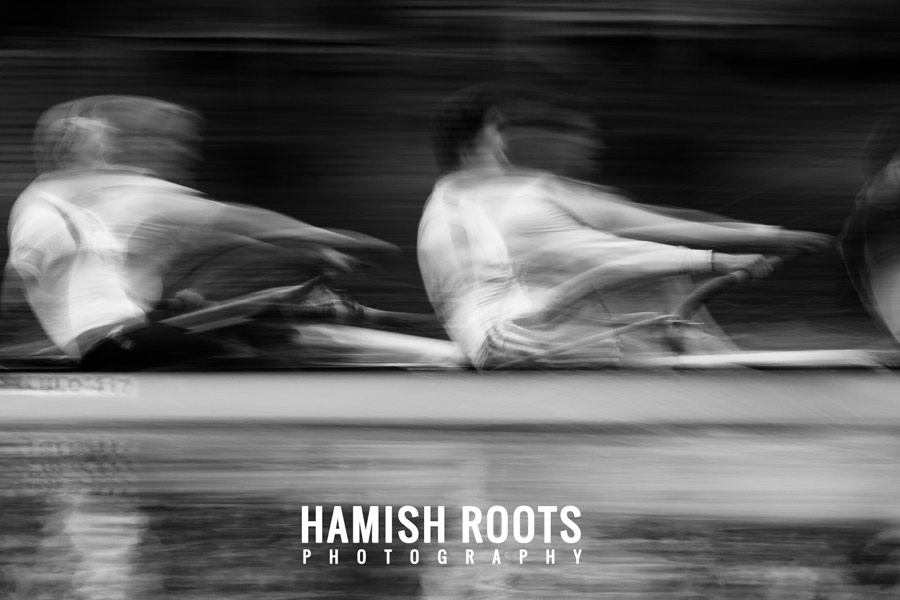
November 2013, London
A lot of good sports photography is very literal – sharp, everything in focus and you can see what’s going on without having to look too closely. Don’t get me wrong, most of my favourite photographs, and many of my own, are just that – pin sharp and a great snapshot of the action as it unfolds – but there’s always the nagging in the back of my mind that wants to explore the creative possibilities with what I have before me. This no doubt stems from my landscape and travel photography work, where I look for a composition that faithfully translates what I’m trying to convey to the viewer, be it a mood or atmosphere at the time I was there. How I do this is the tricky part, it could be a change in my technical approach (camera settings and equipment) or simply how I position the camera to get the shot.
On this particular morning I was following a crew with 4 experienced international oarsmen, their movements precise, measured and consistent, stroke after stroke after stroke. It was a joy to watch, and as the hull was swept along effortlessly for the speed it was displaying, I started to see the possibilities for what I could achieve. It was actually quite impressive, you could fix a point between the launch I was in and the crew and it would barely move as they continued in their rhythm, their movements seeming staying in one place as everything moved around them, I wanted to find a way of showing this. So, rather than selecting the minuscule shutter speeds I would use to freeze the action before me (think thousandths of a second) I chose to dramatically drag the shutter time approaching whole seconds. The rest was down to me timing the shutter button. I only managed a couple of frames before my launch had to move to the other side of the river but in that brief moment I knew I’d got something. I couldn’t have been happier with what I ended up with, the positions of the athletes as they moved was burnt into the sensor just enough to create this striking result, their ghosts trailing through the stroke pattern. The merge between the start of the stroke (the ‘catch’) and the finish in one single frame. A great morning to be out on the water.
<< Back to News Home



